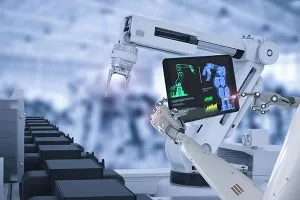A significant portion of current tech news focuses on artificial intelligence and machine learning and what they can do to help move society forward. From fighting malware to flying a drone, AI and machine learning are already at a stage of development where they can be incredibly impactful in a multitude of industries such as healthcare, education, and cybersecurity.

Though AI and machine learning are fantastic tools that will improve businesses in the future, all companies are not currently at a level where they can take advantage of them. These technologies are successful yet dependent on the amount of data they can collect from the business in which they are implemented. To be of service and use their full potential, machine learning and AI technologies must be fed as much data as possible. This, in turn, increases the scale of storage they require. Plenty of companies, SMBs specifically, are not in the position to purchase massive amounts of storage. As a result, this limits their ability to harness the power of AI and machine learning. However, reciprocally, these technologies will reach a point where they can help solve storage problems for businesses juggling far too much data without enough financial means to grow their storage capacity. The amount of data businesses need to keep track of today is exponential. Even SMBs generally have an overwhelming amount of data they must determine how to manage correctly. The power of AI and machine learning will eventually make it easier for IT departments to organize the terabytes of data for which they’re responsible. Distinguishing necessary data from unnecessary files can quickly become a daunting and complicated process as a business grows. Dark data — information gathered during normal business activities that are never used or even known to exist — accumulates far too quickly, to the point where regular scans and maintenance aren’t enough to uncover and delete it all.
Conclusion
Soon, machine learning, AI, and analytics tools will be able to sort through different types of files and emails to determine what is used and what isn’t. Realistically, IT heads will be able to make small adjustments to algorithms and tweak settings on one program, combining the three tools that classify these files. Then, they’ll perform scans that recommend what data can be purged from records to decrease the amount of server storage a business needs, ultimately saving a company space, time, and money. As the data storage expert, StorageCraft is excited to see how these technologies assist in the problems facing our industry today and in the future. We offer our suite of programs to support your business with its storage and backup needs. Contact us today to learn more about StorageCraft solutions or request a demo.
You May Also Like
- Backup and Disaster Recovery Business Continuity Cloud Compliance Cybersecurity Data Protection Data Resilience Data Storage Ransomware
The Importance of Versatile Cloud Data Protection Support in a Multicloud World
December 3rd, 2024 - Backup and Disaster Recovery Business Continuity Data Protection Data Resilience Data Storage Ransomware
A Deep Dive Into Immutable Storage: How It Works for Ensuring Data Protection and Ransomware Recovery
September 26th, 2024 - Backup and Disaster Recovery Business Continuity Cloud Data Protection Data Resilience Data Storage
Microsoft 365 Backup Is Here: How Its Integration With Arcserve SaaS Backup Ensures Cost-Effective Backup and Recovery
August 15th, 2024